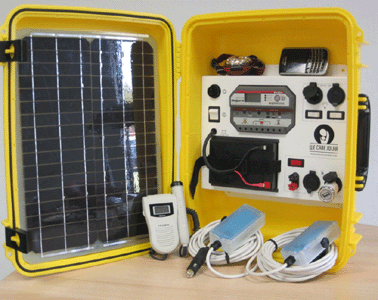One of the key actions President Obama outlined in his climate change speech was that the US would no longer provide funding for entities that finance coal plants anywhere in the world.
Those entities are the World Bank and Ex-Im Bank, which despite strong rhetoric on the need to urgently address climate change, have continued to finance large coal plants in places like India and Africa.
This week, the World Bank officially changed its tune. Although its new energy strategy leaves the door open to finance coal plants, it will be a "rare" occurrence. Instead, the bank will help countries find alternatives to coal.
The draft energy strategy says the bank "will cease providing financial support for greenfield coal power generation projects, except in rare circumstances where there are no feasible alternatives available to meet basic energy needs and other sources of financing are absent."
Universal access to energy is one of the top priorities for the World Bank, whose mission is to help end poverty.
Sorry, World Bank. There is always an alternative to coal. In countries where new energy resources can have a big impact on poverty, those are the places where small-scale distributed renewable energy, especially solar, is especially appropriate.
Solar in a Suitcase is one of many innovative, entrepreneurial efforts to bring energy to the developing world:

There’s enough evidence now on the ground that wind and solar both compete handily on price with new coal plants.
Unfortunately, the World Bank also misses the mark on hydropower, which gets renewed emphasis in the new energy strategy. In the 1990s, the bank withdrew support for big hydro under pressure from aid groups that warned against displacing people in the way of these massive projects, reports Reuters.
Although the World Bank views big hydro as a way to produce "clean" energy, this energy comes at way too big a cost for the thousands – and sometimes millions – of people that are displaced and flooding/ destroying precious ecosystems and habitats for countless species.
A prime example are plans for the world’s biggest dams in the Congo, which are moving forward partially because of World Bank funding.
"The World Bank ignores that better solutions are readily available. In the past 10 years, governments and private investors installed more new wind power than hydropower capacity," Peter Bosshard of International Rivers told Reuters.
The draft energy strategy also says the bank will scale up support for natural gas but will not finance nuclear plants.
Although the US is the World Bank’s largest shareholder, there are 188 member nations, and countries like China and Brazil have, in the past, blocked proposals that would prevent the World Bank from financing coal.
In 2010, the World Bank approved a $3.75 billion loan for the world’s seventh biggest coal plant in South Africa. In the 12 months through June 2012, the bank financed $8.2 billion worth of energy projects, $3.6 billion of which went to renewable energy.
Some of the programs approved this year are $302 million to raise energy efficiency in Turkish businesses and $31 million to address carbon emissions in buildings in China.
Current goals are, by 2030, achieving universal access to energy, while doubling energy efficiency and renewable energy in the world’s energy mix.
World Bank Climate Initiatives
The bank says it’s helping 130 countries take action on climate change and doubled financial lending for adaptation last year. Its "Partnership for Market Readiness," helps countries meet emissions targets as quickly as possible. Eight countries are receiving $350,000 grants to help them prepare for a cap-and-trade program, such as Costa Rica.
It administers a $7.2 billion Climate Investment Fund that operates in 48 countries, leveraging an additional $43 billion in private investment. One of those investments is in the world’s largest concentrating solar plant in Morocco, currently under construction.
It has pledged significant increases in funding to reduce climate forcers – black carbon, methane and the other short-lived climate pollutants.
And it signed on to a plan to connect all the Americas to the same electrical grid by 2022.
In May, the International Finance Corp (IFC), the private sector arm of the World Bank, issued the biggest green bond to date (also called "climate bonds"), a $1 billion, 3 year, AAA-rated bond that leveraging capital for climate investments such as renewable energy projects, methane capture and forest protection. That brings the total to over $2 billion in green bonds.
